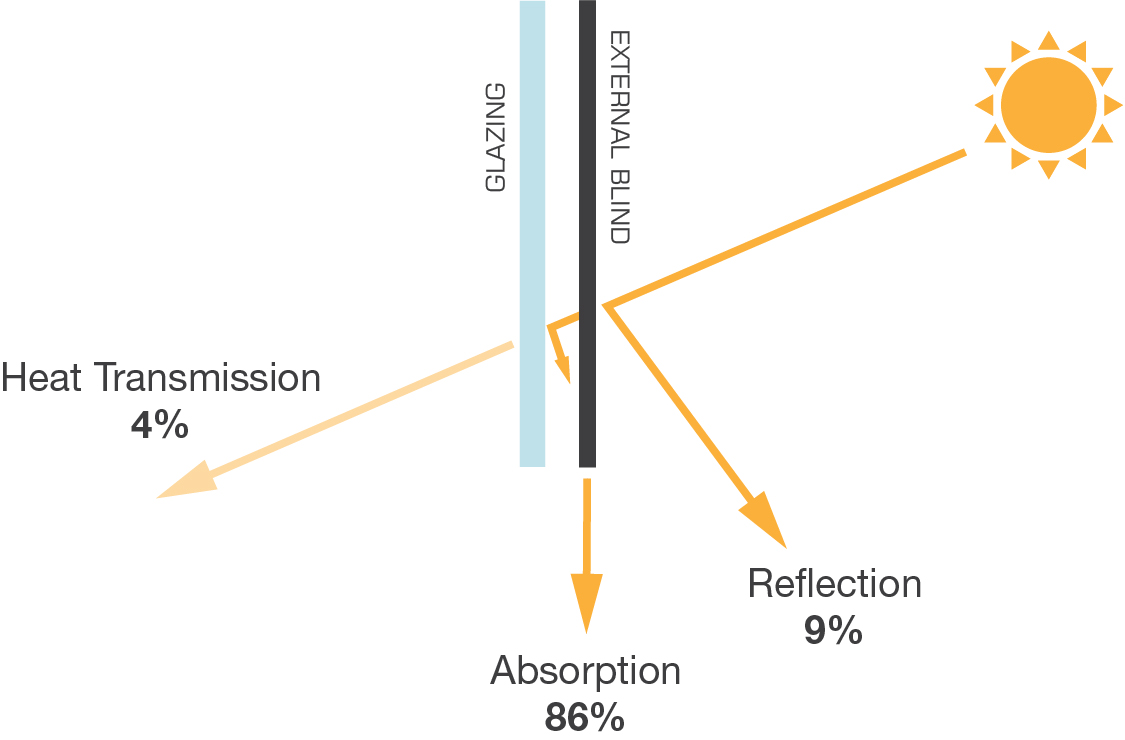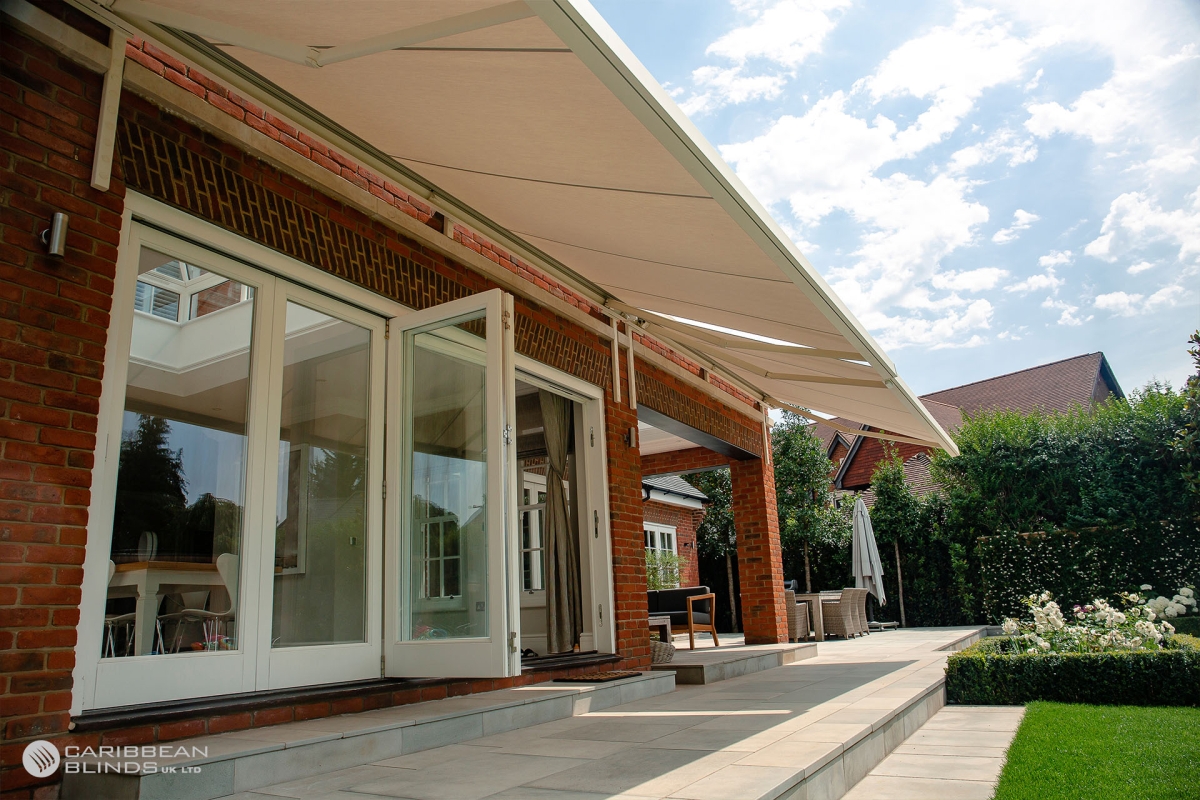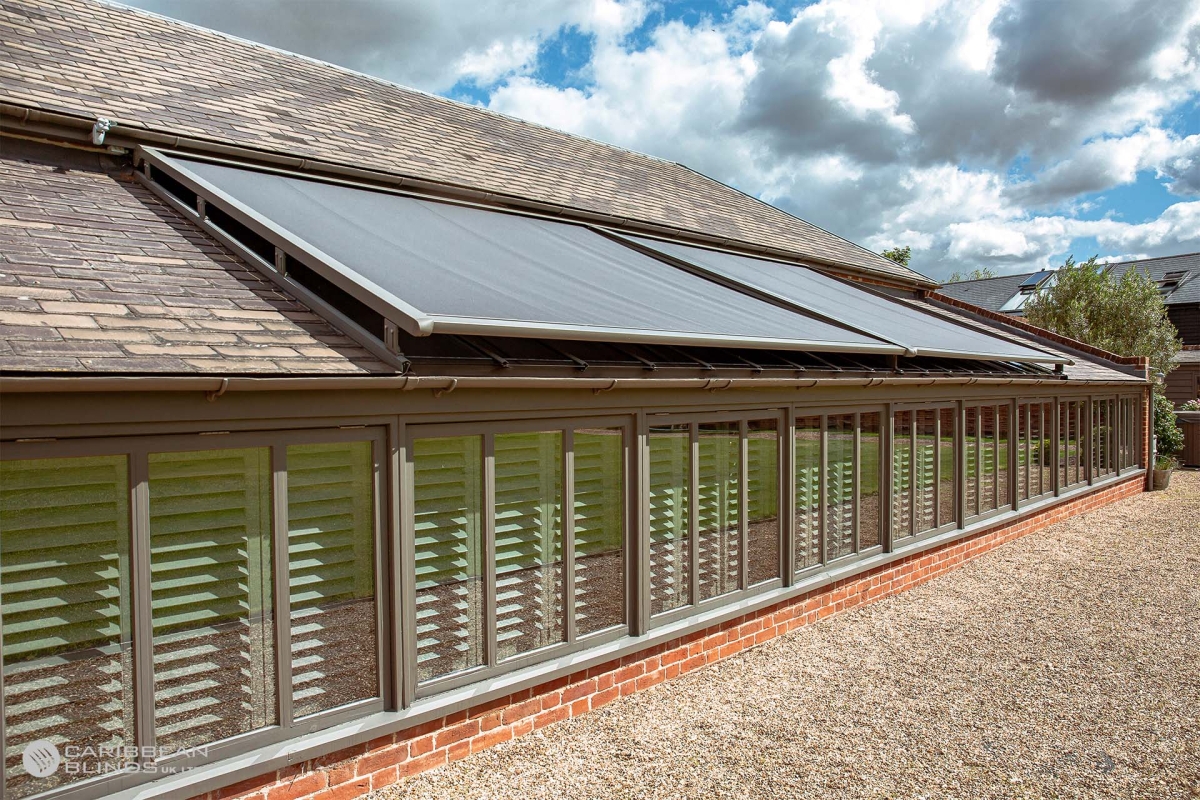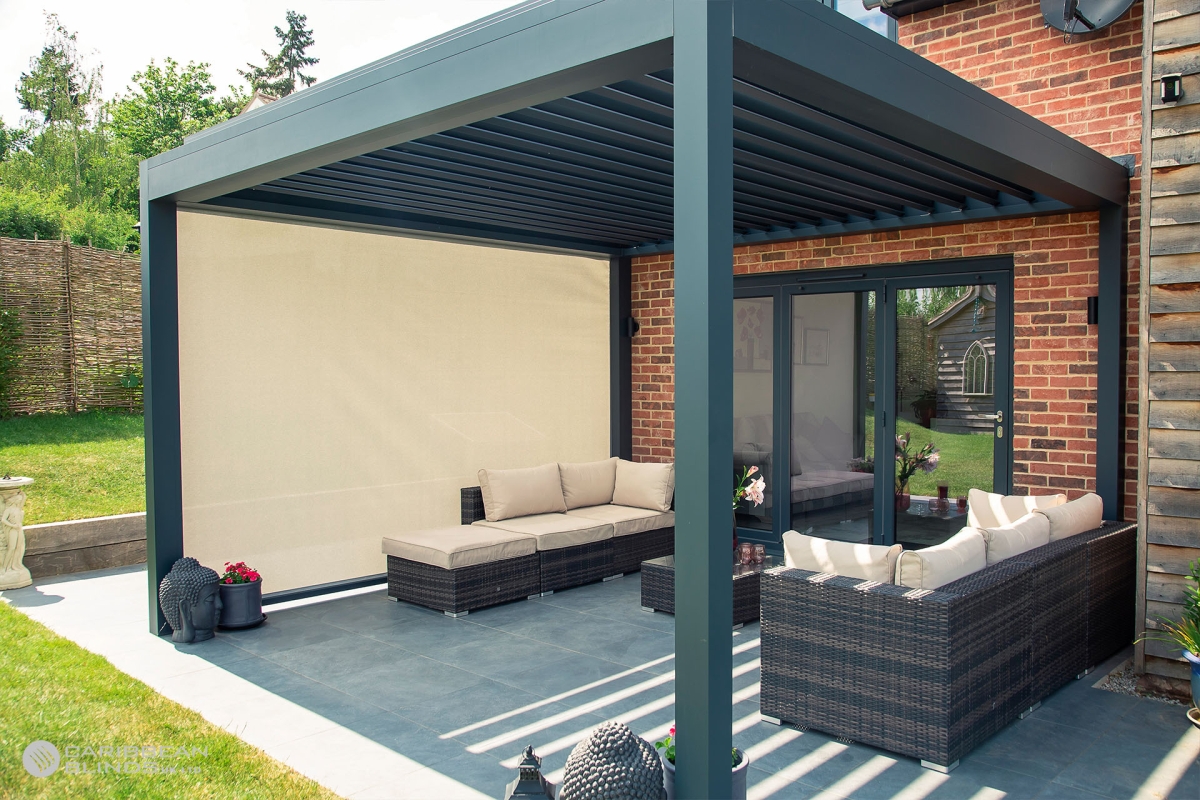THE FUNDAMENTALS OF SOLAR GAIN IN BUILDINGS (WHY BUILDINGS GET HOT)

The Sun is constantly flooding the earth with huge amounts of energy. This energy comprises of 4 main bands; UV (ultraviolet), visible light, near infra-red (shortwave) and infra-red (longwave) radiation. Of the energy that reaches the earth, it is primarily made up of visible light and near infra-red (shortwave) radiation with only 2-3% UV radiation.
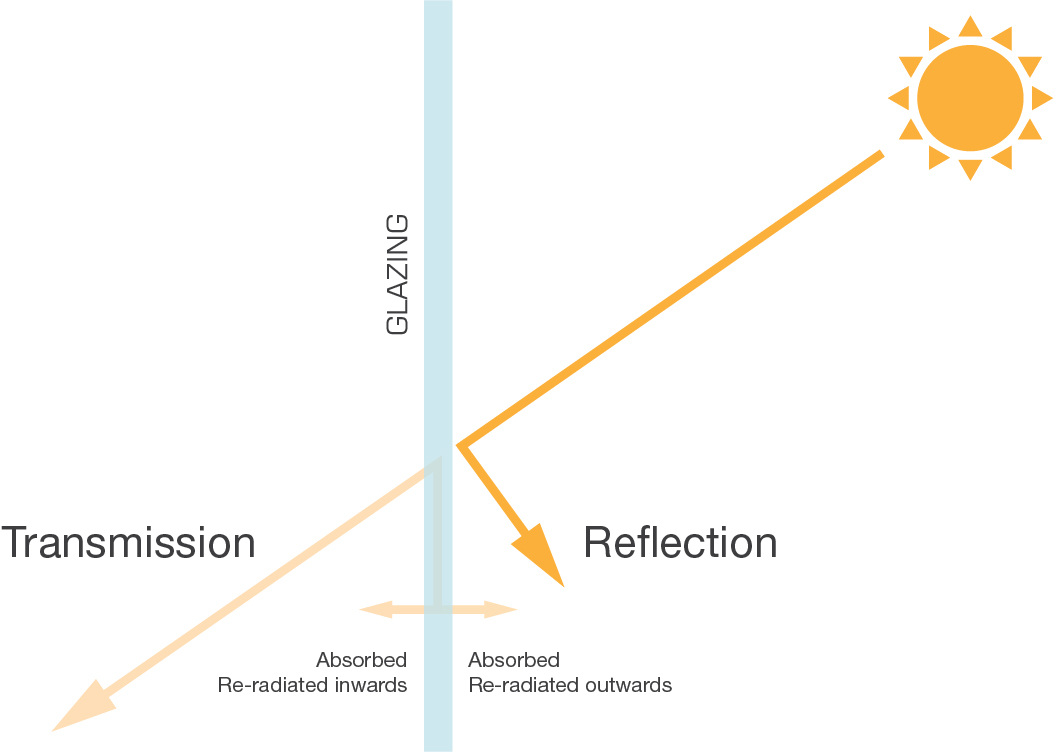
When the suns near infra-red (shortwave) radiation strikes glass (or any object), 3 key things happen:
- Some of the sun’s energy is directly transmitted through
- Some of the sun’s energy is reflected
- Some of the sun’s energy is absorbed
The level of transmission, reflection and absorption will depend on the type of glass.
The energy that is transmitted through the glazing, when it hits an object inside the room such as a chair, desk, wall etc along with internal shading devices is absorbed and re-radiated as longwave infra-red ‘heat’ rays. The same applies to the sun’s energy which is absorbed by the glass, it is converted to infra-red ‘heat’ rays, some of which is re-radiated into the building and some into atmosphere.
The total solar ‘heat’ radiation entering the building is a combination of what is directly transmitted through the glass (ie is going to be converted to heat) and the element of radiation that is absorbed by the glass and re-radiated inwards.
Glazing is virtually transparent to incoming shortwave radiation but when this radiation is converted to longwave ‘heat’ rays, glazing becomes opaque to it, causing the heat radiation to remain trapped in the building and indoor temperatures to rise. The above process is often referred to as the greenhouse effect.


